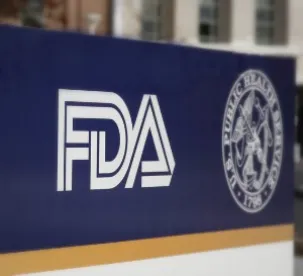On March 26, 2020, the US Food and Drug Administration issued FAQs on 3D printing of medical devices, accessories, components and parts during the Coronavirus (COVID-19) pandemic. While the use of 3D printers can help address critical device shortages, FDA recommends healthcare professionals take additional precautions when using 3D-printed products that have not undergone FDA premarket review.
IN DEPTH
As demand for critical medical devices and personal protective equipment (PPE) continues to exceed available supplies, healthcare professionals (HCPs), consumers and companies are evaluating 3D printing options to create the necessary supply. On March 26, 2020, the US Food and Drug Administration (FDA) issued FAQs on 3D Printing of Medical Devices, Accessories, Components, and Parts During the COVID-19 Pandemic.
FDA regulates devices made with 3D printing technology in the same manner as it regulates devices made using other manufacturing processes. In 2016, FDA issued draft guidance on Technical Considerations for Additive Manufactured Devices to clarify device design, manufacturing and testing considerations for device manufacturers using 3D printing. FDA recommends that entities interested in using 3D printing technology to manufacture devices review this document for best practices and recommendations to address quality and performance issues.
The FAQ also addresses several COVID-19-specific issues of interest, such as:
- 3D Printing of PPE Products (e.g., gowns, masks, gloves, respirators). FDA acknowledges that it may be possible to use 3D printing to create PPE products. However, manufacturers using 3D printing techniques should consider how technical limitations may affect their ability to produce safe, effective products. For example, while 3D printed surgical masks and respirators may provide a physical barrier, FDA states they are “unlikely to provide the same fluid barrier and air filtration protection” as their FDA-cleared counterparts.
- HCP Use of 3D-Printed Devices. FDA does not prohibit HCP use of 3D-printed PPE. FDA does, however, provide the following specific recommendations for HCPs using 3D-printed masks:
- Check the mask’s seal for leaks
- Confirm ability to breathe through any makeshift filter materials
- Exercise caution in clinical or surgical environments (e.g., where the need for liquid barrier protection and flammability is a concern)
- Be aware that the mask may not provide the appropriate filtration to prevent transmission of infectious agents
- Safely dispose of infectious materials and disinfect any part of the mask intended for reuse
- 3D Printing Accessories, Components or Parts for Medical Devices. In general, FDA recommends that entities use original parts or those with the same specifications, dimensions and performance, if available. If an entity decides to 3D print such items, however, the agency recommends that such entities use plans from original parts when available, verify that any 3D-printed products fit and work properly before they are used in a clinical setting, and work with relevant medical device manufacturers, where possible. FDA also notes that complex parts (such as working pumps or electronics) may be more difficult to 3D print than other parts.
- 3D Printing Entire Medical Devices. FDA states that it is willing to discuss printing entire medical devices, but that some devices are more amenable to 3D printing than others. Interested manufacturers and entities should contact the agency at COVIDManufacturing@fda.hhs.gov.
- Ventilators, Ventilator Tubing Connectors and Ventilator Accessories. In the FAQs, FDA states that its recently issued Emergency Use Authorization (EUA) for ventilators, ventilator tubing connectors and ventilator accessories (see our prior On the Subject here) “could include items such as 3D-printed tubing connectors for multiplexing ventilator use.” This statement indicates FDA’s willingness to permit the use of 3D-printed materials for use in ventilator components and accessories as a solution to address the impending severe shortage of ventilators nationwide.
Key Takeaways: While FDA is willing to permit the use of 3D printing to help address critical device shortages, the agency notes that 3D-printed masks may not provide the same level of protection as FDA-cleared surgical masks and N95 respirators. Therefore, the agency is encouraging HCPs to take additional precautions when using 3D-printed products that have not undergone FDA premarket review. Other entities who wish to make, distribute or sell 3D-printed PPE are encouraged to contact the agency at COVIDManufacturing@fda.hhs.gov.






 />i
/>i
